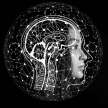Exploring Dreams
A Journey into the Subconscious

Introduction:
Dreams have long fascinated and mystified humanity. They are enigmatic journeys into the depths of our subconscious, where reality blends with imagination, and the ordinary becomes extraordinary. From ancient civilizations to modern psychologists, dreams have been interpreted, analyzed, and revered as windows into the inner workings of the human mind. In this article, we embark on a journey to explore the multifaceted nature of dreams, their significance, and the mysteries they hold.
The Nature of Dreams:
Dreams, often occurring during the rapid eye movement (REM) stage of sleep, encompass a diverse range of experiences. They can be vivid, surreal, and emotionally charged, transporting us to alternate realities or replaying fragments of our memories. While some dreams are fleeting and forgotten upon waking, others linger, leaving a profound impact on our thoughts and emotions.
Psychologists have proposed various theories to explain the function of dreams. Sigmund Freud, the father of psychoanalysis, believed that dreams serve as a pathway to the unconscious mind, revealing hidden desires, fears, and conflicts. According to Freud, dreams are symbolic representations of our innermost thoughts, shaped by repressed wishes and unresolved childhood experiences.
In contrast, Carl Jung, a pioneer in analytical psychology, viewed dreams as a means of self-discovery and individuation. Jung emphasized the archetypal symbolism present in dreams, suggesting that they reflect universal themes and collective unconscious elements shared by all humanity.
The Interpretation of Dreams:
Interpreting dreams has been a practice steeped in cultural traditions and personal beliefs. Throughout history, dreams have been regarded as omens, messages from the divine, or portals to the spirit world. Ancient civilizations, such as the Egyptians and Greeks, placed great importance on dream interpretation, believing that dreams provided insights into the future and guidance from gods and ancestors.
In contemporary psychology, dream analysis remains a subject of fascination and debate. Therapists often employ techniques such as free association and dream journaling to uncover the latent meaning behind dreams. While some interpretations focus on symbolic imagery and metaphorical representations, others emphasize the emotional significance of dream content, exploring the feelings and conflicts embedded within.
The Function of Dreams:
The function of dreams continues to be a topic of conjecture among scientists and scholars. While some theories propose that dreams serve a physiological purpose, such as memory consolidation or neural processing, others suggest that they play a role in emotional regulation and problem-solving.
One prominent theory, known as the threat simulation theory, posits that dreams simulate threatening scenarios as a form of evolutionary adaptation. By rehearsing potential dangers during sleep, the brain prepares for real-life challenges, enhancing survival instincts and decision-making abilities.
Moreover, recent research has highlighted the role of dreams in creative thinking and insight generation. Dreams often feature fantastical imagery and unconventional narratives, offering a playground for the imagination. Artists, writers, and innovators throughout history have credited dreams with inspiring their most groundbreaking ideas and inventions.
Conclusion:
Dreams have long fascinated humanity, serving as a mysterious realm where the subconscious mind unveils its enigmatic narratives. Throughout history, cultures have ascribed various meanings to dreams, considering them omens, messages from the divine, or windows into the soul. In contemporary psychology, dreams are often interpreted as reflections of one's thoughts, emotions, and experiences, synthesized during sleep. The study of dreams encompasses a range of disciplines, from neuroscience and psychology to anthropology and literature, each offering unique insights into the nature and significance of these nocturnal phenomena.
In conclusion, dreams continue to captivate our imagination, serving as a rich tapestry of symbols, emotions, and narratives. While modern science has shed light on the physiological processes underlying dreaming, the true essence of dreams remains elusive, defying simple explanations. Whether viewed through the lens of Freudian psychoanalysis, Jungian archetypes, or neurobiological mechanisms, dreams persist as an integral aspect of the human experience, inviting exploration, interpretation, and wonder. In their boundless complexity, dreams remind us of the vast depths of the mind, inviting us to ponder the mysteries that lie within.
About the Creator
ShadowVerse
Mysterious content creator.






Comments
There are no comments for this story
Be the first to respond and start the conversation.